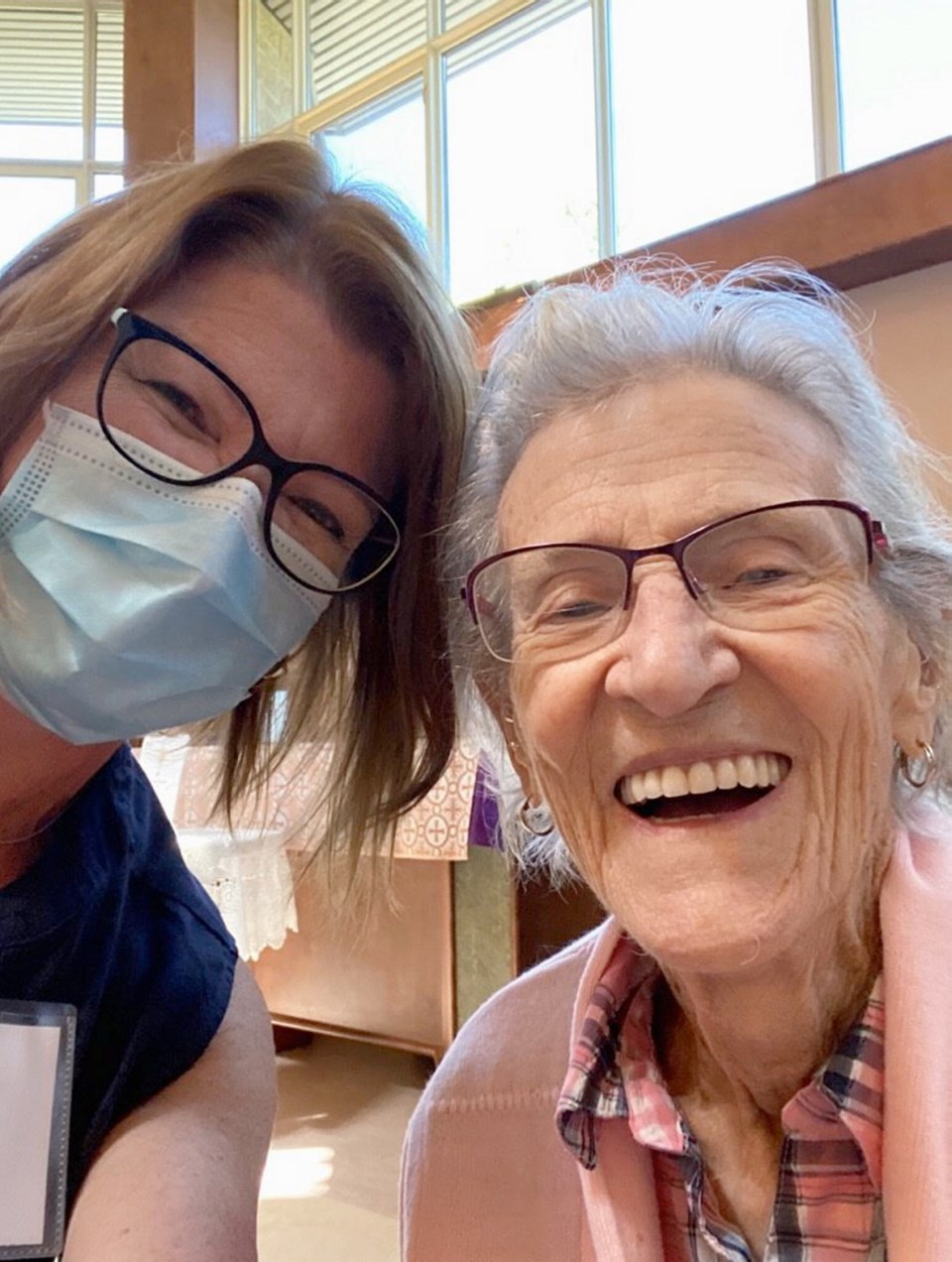Victoria’s Brenda Brophy tried in vain to hold back tears on Friday as she said goodbye to her 100-year-old mother following their first official meeting since visitation restrictions for long-term-care and assisted-living homes were eased last week after almost four months.
“She smiled and told me: ‘Don’t worry, I plan to be here for a while yet,’ ” said Brophy.
Last week, provincial health officer Dr. Bonnie Henry said each resident could receive a scheduled visit by one designated family member in care homes that have a COVID-19 safety plan.
“We’re doing it in the most cautious way that we can, knowing that these are the situations where it can be absolutely tragic if the virus is introduced,” Henry said.
On Friday, two new cases of COVID-19 were announced on Vancouver Island, bringing the total to date to 135. Of 187 COVID-19 deaths in the province, 135 have been in long-term-care residences.
Brophy and her mother, Dot Finnerty, met Friday for their scheduled 45-minute visit in the chapel at Mount St. Mary Hospital in Victoria. The chapel is one of two or three designated meeting spots at the facility, including spots outside.
The visits will take place every two weeks. Before the pandemic, Brophy would visit two to three times a day.
“She’s frail and there’s a sadness I’ve never seen before,” said Brophy. “Yet I’m not [considered] essential to her well-being.”
Brophy is one of a growing number of family members who argue that, barring an outbreak, each resident should be allowed a designated essential visitor to be at a loved one’s bedside. Essential visitors are mainly staff. Family are generally considered non-essential visitors, a categorization that makes many bristle.
Families have been agitating to see loved ones since transmissions rates of COVID-19 began to flatten in the province.
However, with those visits starting last week, it’s clear what many really want is to be at their loved one’s bedside to provide oversight. In Brophy’s case, she wants to help her mother bathe, style her hair and polish her nails.
“I only saw her once before, on June 8,” said Brophy. “I was stunned back then how frail she’d become, but today she was even more so. Not as sparkly and they don’t do all the personal grooming things I used to. Her hair is unkempt, greasy. Nails are all gross and dirty, which was bothering her.”
Despite her dementia and decline, Finnerty could still see the worry in her daughter’s eyes.
“She told me to take care of myself,” said Brophy. “I started to cry and again hugged her and told her I loved her and made her promise to be OK and stay healthy.”
Finnerty was also able to hold a video chat, albeit confused at times, with her sister Edna Dobie, who turned 102 on Thursday. “Mom exclaimed: ‘Wow, that makes me 100.”
Brophy also wants to see a public inquiry into long-term care in the province.
She said her mother was in publicly funded Oak Bay Lodge for “22 months and three days" and that was 22 months and three days too long.
Brophy later moved her mother to Mount St. Mary’s in Victoria, which she said was “much, much better.”
Still, like many families on the Island, Brophy maintains that oversight by family members at the bedside is needed citing in many cases poor training and staffing shortages.
Henry has said that while visits could expand and become more frequent, some form of restriction is anticipated to be in place for a year.
“Keeping people safe in those communal living environments is incredibly important,” said Henry, adding the pandemic has exposed vulnerabilities in many long-term care homes, which have staffing challenges and aging infrastructure.
While visitation is an important part of physical and mental health for seniors in care, she said it needs to be done in a measured fashion so the virus isn’t introduced into a care home again.
B.C. Health Minister Adrian Dix said restoring visits is important, but the province is trying to be methodical. “I understand that people may be concerned now that we’re having visits that they’re not sufficient for them and we’re going to try and reach out and expand that, but it is absolutely essential that that be done in a safe way.”
Dix said by the end of the year, all long-term care homes will be providing at least the provincial standard of 3.36 hours of direct care per resident per day on average. Aging infrastructure needs to be renovated or replaced and a new generation of health-care workers needs to be found and trained, especially in direct care to seniors, he said.
“I think we’ve made significant progress in doing some of these things, some of the actions taken before and during the pandemic, but there is a lot of work left to do and everybody who understands and knows and works in the system or visits loved ones in the system understands that.”



